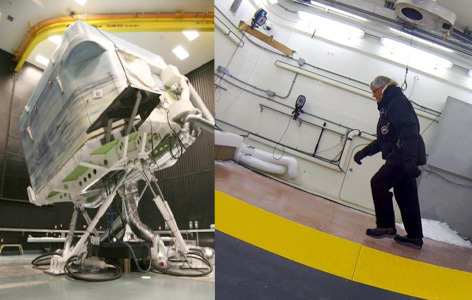
Annually, over 21,000 Ontarians end up in emergency rooms because of slips on ice or snow and many avoid going outside for fear of falling. To address this serious issue, TRI researchers, including Research Associate Dr. Yue Li, Postdoctoral Fellow Dr. Reza Rizvi and Scientist Dr. Tilak Dutta, are investigating new materials to improve winter boot traction, and advanced ways of evaluating the performance of winter footwear.
Ice is a challenging surface to grip because a quasi-liquid layer of water acts as a lubricant between the ice and a walker's boot. Ice cleats grip ice by penetrating through this liquid-like layer into the solid ice below—but this approach does not work on hard indoor surfaces, and cleated footwear can lead to falls when returning indoors.
Using a novel manufacturing technique, the research team developed a composite, rubber-like material with microscopic glass fibres that protrude from the surface. These fibres act like 'micro-cleats' to penetrate the liquid layer, providing four times more traction on ice than molded rubber. "This material is still a long way from being used in commercial footwear. One issue is that we need to make it harder so it will last longer," says Dr. Dutta.
"We use a facility called WinterLab to objectively test footwear performance on real ice. In Winterlab, participants walk up and down ice-covered slopes that can be made steeper. As well as helping to develop better footwear materials, WinterLab enables objective slip-resistance ratings to be defined so that consumers can be better informed before making a purchase." To see videos of their footwear testing process, visit the TRI Technology Team website.
This work was supported by the Technology Evaluation in the Elderly Network (part of the Networks of Centres of Excellence), the Canada Foundation for Innovation, the Natural Sciences and Engineering Research Council, the Government of Ontario and the Toronto Rehab Foundation. H Naguib holds a Tier 2 Canada Research Chair in Smart and Functional Polymers. Image credit: Dr. Tilak Dutta.
High friction on ice provided by elastomeric fiber composites with textured surfaces. Rizvi R, Naguib H, Fernie G, Dutta T. Applied Physics Letters. 2015 Mar 16. [Pubmed abstract]




